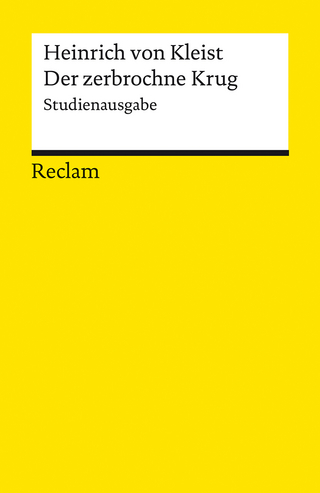
The Satchmo' Suite
Seiten
2010
Talonbooks (Verlag)
978-0-88922-648-7 (ISBN)
Talonbooks (Verlag)
978-0-88922-648-7 (ISBN)
- Lieferbar (Termin unbekannt)
- Portofrei ab CHF 40
- Auch auf Rechnung
- Artikel merken
A black cellist invokes the ghost of Louis Armstrong to help him with Bach's difficult Six Suites for Solo Cello.
Hubert Clements is a black cellist on tour with a symphony orchestra. Their guest soloist is injured and the conductor asks Clements to stand in. After wrestling with an extremely dif?cult passage in the performance piece, Bach's Six Suites for Solo Cello, Clements ?nally resorts to improvising his way through the score, which earns him a stinging rebuke from the conductor, who disdainfully calls him "Satchmo'." Humiliated, Clements returns to his hotel room, where try as he might he cannot master the piece. Unwittingly invoking the ghost of Louis Armstrong, the highly mythologized spirit of "the father of jazz himself," Satchmo' challenges Clements' prejudiced view of him as an amateur and an "Uncle Tom." Gradually, the lives of the characters intertwine and begin to play off each other as issues of class, hope, courage, family and race emerge in a lively and powerful struggle between what we remember, and how we remember it. In the end, of course, the drama resolves with Clements's beautiful rendition of the Bach piece.
The play ultimately explores the polarities of existence--between the head and the heart, between logic and intuition, between insecurity and faith, between the present and the past, and between the personal and the public, and it is Hubert and Louis who embody these concepts for the audience. Finally, it's a play about dealing with life's struggles, having the courage to face one's demons, and then having the faith to go on and be the best you can be. Originally written as a highly successful one-person show, the play has evolved over the years into an ensemble piece with a cast of ?ve. Full of great jazz and classical music, but using none of Satchmo's own compositions, the play incorporates nine original jazz songs, co-written by the author-musicians, into the action.
Hubert Clements is a black cellist on tour with a symphony orchestra. Their guest soloist is injured and the conductor asks Clements to stand in. After wrestling with an extremely dif?cult passage in the performance piece, Bach's Six Suites for Solo Cello, Clements ?nally resorts to improvising his way through the score, which earns him a stinging rebuke from the conductor, who disdainfully calls him "Satchmo'." Humiliated, Clements returns to his hotel room, where try as he might he cannot master the piece. Unwittingly invoking the ghost of Louis Armstrong, the highly mythologized spirit of "the father of jazz himself," Satchmo' challenges Clements' prejudiced view of him as an amateur and an "Uncle Tom." Gradually, the lives of the characters intertwine and begin to play off each other as issues of class, hope, courage, family and race emerge in a lively and powerful struggle between what we remember, and how we remember it. In the end, of course, the drama resolves with Clements's beautiful rendition of the Bach piece.
The play ultimately explores the polarities of existence--between the head and the heart, between logic and intuition, between insecurity and faith, between the present and the past, and between the personal and the public, and it is Hubert and Louis who embody these concepts for the audience. Finally, it's a play about dealing with life's struggles, having the courage to face one's demons, and then having the faith to go on and be the best you can be. Originally written as a highly successful one-person show, the play has evolved over the years into an ensemble piece with a cast of ?ve. Full of great jazz and classical music, but using none of Satchmo's own compositions, the play incorporates nine original jazz songs, co-written by the author-musicians, into the action.
Hans Boggild Playwright, dramaturge and director Hans Boggild has had a 40-year career in Canadian theatre, including a position as artistic producer at the innovative Eastern Front Theatre. Doug Innis Toronto-based Doug Innis is a celebrated cellist, jazz musician and composer.
| Erscheint lt. Verlag | 11.11.2010 |
|---|---|
| Zusatzinfo | Illustrations |
| Sprache | englisch |
| Maße | 139 x 215 mm |
| Gewicht | 113 g |
| Themenwelt | Literatur ► Lyrik / Dramatik ► Dramatik / Theater |
| Kunst / Musik / Theater ► Musik ► Jazz / Blues | |
| Sachbuch/Ratgeber ► Gesundheit / Leben / Psychologie ► Esoterik / Spiritualität | |
| Sachbuch/Ratgeber ► Gesundheit / Leben / Psychologie ► Familie / Erziehung | |
| ISBN-10 | 0-88922-648-2 / 0889226482 |
| ISBN-13 | 978-0-88922-648-7 / 9780889226487 |
| Zustand | Neuware |
| Haben Sie eine Frage zum Produkt? |
Mehr entdecken
aus dem Bereich
aus dem Bereich
Der Tragödie erster und zweiter Teil. Urfaust
Buch | Hardcover (2021)
C.H.Beck (Verlag)
CHF 15,90
Kleist, Heinrich von – Deutsch-Lektüre, Deutsche Klassiker der …
Buch | Softcover (2024)
Reclam, Philipp (Verlag)
CHF 11,90


